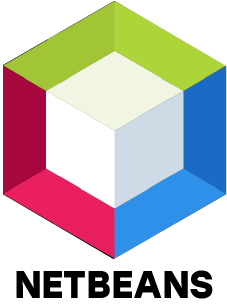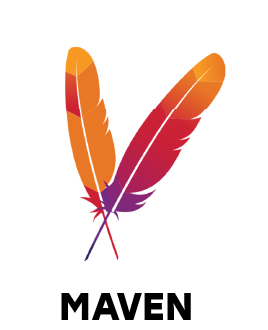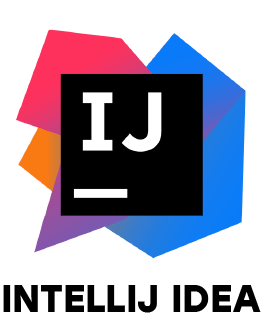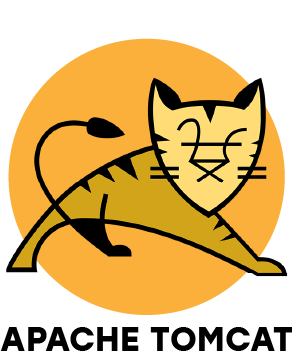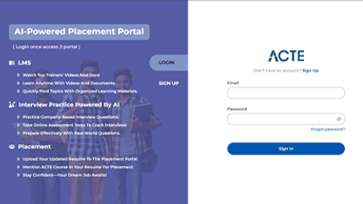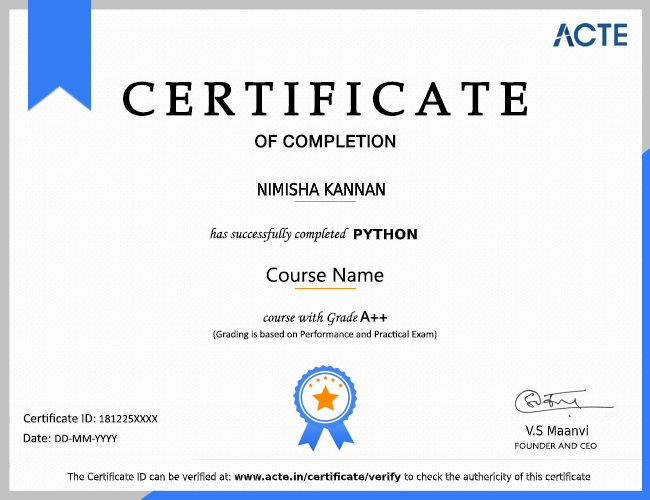Additional Info
General Responsibilities of Certified Java Developers :
Through the speed and scalability of their solutions, Java developers can dramatically boost application functionality within a firm. The day-to-day responsibilities of a Java developer differ based on whether they are responsible for single or multiple applications. However, many Java developers find themselves doing more than just programming and are involved in the entire software development process. This allows Java developers to engage in DevOps by exploring and recommending alternate approaches and technologies for achieving end goals. Design, develop, implement, and maintain stages, code, and software for Java applications. Conduct software analysis, programming, testing, and debugging, as well as making recommendations for process improvements. Identify production and non-production application concerns by converting requirements into specifications.
Skill Requirement for Professional Java Developer :
- Patience and tenacity in the face of difficulties, in solving issues, and in learning new computer languages and techniques.
- Competence and experience with a variety of frameworks (e.g., Spark, Storm, Hadoop, Angular 2/4/5, Spring Boot) are required.
- Ability to collect accurate requirements and collaborate extensively with stakeholders to prioritize activities and development scope.
- In a testing setting, strong attention to detail and the ability to spot problems and make improvements are required.
Various Java Frameworks Practices :
Apache Wicket:
Wicket's major feature is its POJO model, which uses plain (Plain Old) Java Objects with OOP features as components. Developers can customize these components by bundling them together through reused packages containing images, buttons, forms, links, pages, containers, behavior, and more.
Java Server Faces:
It's a component-based MVC framework with server-side UI components that may be reused. The fundamental goal is to encapsulate several client-side technologies such as CSS, JavaScript, and HTML, allowing developers to construct user interfaces without having a deep understanding of either of these technologies.
ATG :
ATG is a Java-based digital commerce platform. It's a very adaptable and configurable framework that's especially suitable for e-commerce websites. Oracle owns the product, which supports both B2B and B2C applications that are complicated and large. It may be prohibitively expensive for small-scale applications.
Vaadin :
Vaadin flow is the Java framework component of the Vaadin platform that handles client-server communication and routing. You may develop your web application entirely in Java with Vaadin flow, eliminating the need for JS or CSS. It's a completely new way of developing Java apps that allows you to focus solely on the presentation layer without having to worry about client-server communication.
Openxava :
It is made up of business components that make developing even the most complicated applications simple and painless for developers. OpenXava, which is extensible, flexible, and OO in the real sense, models the business problem using Java classes. Encapsulation is ensured with a model-driven development strategy like this. Everything is a business concept here, and all the artifacts that contribute to that business concept, whether it's the accompanying View, Model, or Controllers, were in the same place.
Jersey :
Jersey is a web services framework that supports JAX-RS APIs and allows you to construct a Client library. Through handy features and utility functions, it substantially improves the building of Cloud resources. Jersey also has a testing infrastructure that is simple to use. Lightweight integration tests based on Junit are possible to write. The tests are relatively simple to incorporate with the Maven environment. Simply include the dependency in your pom.xml file.
Apache Mina :
Apache Mina is a network application framework that allows developers to design scalable and performant network applications quickly. Mina offers consistent APIs for all transports if you want to use TCP/IP, UDP, LDAP, NTP, DNS, or a custom protocol. High-level and low-level network APIs are available through the framework. Mina takes care of all I/O activities, allowing developers to focus entirely on business logic and other application requirements.
GWT :
Google Web Toolkit (GWT) is a Java framework designed by Google for developing sophisticated internet applications. One of the most useful characteristics of GWT is that it turns Java code into JavaScript code, which is specialized code written for the browser. This feature appeals to me because we used to spend a lot of time and effort on browser testing during development. We can create highly performant mobile apps in less time with this fully accessible collection of technologies. Because GWT is compatible with the Eclipse IDE, Maven, and Junit, users can easily merge your existing codebase with it.
Spark :
It's a Java micro-framework and domain-specific language that focuses on development speed. It only takes a minimal amount of setting and coding. Because of in-memory computation, it is 10 times faster than Hadoop in terms of data processing. Spark is a fully dynamic framework that allows for lazy initialization and real-time data processing. It's also simple to interface with data science and big data operating systems like Scala and R.
Tapestry :
JSF and Wicket are both similar to Tapestry. It's a component-based web application development framework that's open-source and cross-platform. It's capable of producing highly scalable apps. It works on just about any container or application server and is based on the extensive Java Servlet API. Tapestry is an Object-Oriented Framework in the sense that it allows you to generate HTML pages using either pure HTML templates or plain Java classes (objects).
Java Environmental Integration :
Install JDK (Java Development Kit) and JRE (Java Runtime Engine) to get Java running on your computer. To install both, make sure you have enough system memory. JDK and JRE can be downloaded for any device from the Oracle website (Windows, macOS, Linux, etc.). It is quite simple to follow the installation directions on the screen; it is straightforward. Following installation, you must configure your machine's configuration files (PATH). The path refers to the directory where JDK and JRE are installed.
IDE (Integrated Development Environment) :
It is best to use an IDE for easy development, build, and testing so that you may focus more on the coding element. The IDE assists you in following recommended coding practices, alerts you to compilation (and occasionally runtime) errors, provides ideas, creates standard code, adds comments, and more. When you use an IDE, it's also easy to import and include libraries in your workspace.
Frequent IDE for Java Platform :
- Eclipse :
It is a full Java and J2EE programming environment. Eclipse allows you to add as many modules and plug-ins as you like, and although it takes up space, it is never slow. Eclipse is available for download here. You may also quickly add log comments, debug the code, write Junit tests, produce stubs and WSDLs, and generate stubs and WSDLs. Eclipse is user-friendly, and you may tailor its functionality to your project's needs. Using simple plug-ins, Eclipse may be used as a Python IDE, C/C++ IDE, and Scala IDE in addition to Java. If you don't need all of Eclipse's functionality, you can download Easy Eclipse, a lighter alternative.
- Netbeans :
NetBeans offers quick user interface creation, cross-platform support, and the greatest Java technology support. It also features sophisticated HTML, JS, and CSS capabilities. NetBeans is quick, and you can conduct basic project management and versioning with it. C/C++, PHP, and JSP are also supported by NetBeans. Download Apache NetBeans to rework your code, check its correctness and verify best practices.
- IntelliJ IDEA :
IDEA supports a wide range of languages and frameworks and has built-in version control, profiler, and database tools, among other features. Auto-complete recommendations and dynamic compilation make development go faster. Other languages, such as SQL, HTML, and JavaScript, can also benefit from context-based assistance. You may put all of the tiresome and repetitive duties aside and concentrate on your business logic. The tool suggestions are intuitive, allowing developers to continue working without interrupting their flow.
Top Benefits of Learning Java Online Certification :
- Java is a mature and widely used programming language, there are several sources for learning it, including the internet, community, and institutes.
- Programmers with a strong understanding of Java are in high demand. In the technology business, the widely utilized programming language continues to create jobs. Furthermore, as Android apps become more popular, this opens up a plethora of chances for Android developers who design native Java apps.
- Java's concepts are much easier to understand and relate to because it is an Object Oriented Programming language. It is a versatile, system-modular, and extendable programming language due to its object-oriented properties.
- Java is open source, you won't have to pay anything to create an application in it. Java is a free and open-source programming language that may be found on the official Java website.
- JAVA's comprehensive API structure is the key to its success. Java includes a comprehensive range of tools, all of which are backed by Java's open-source ecosystem, and include everything you'll need to get started with the language.
- Java has risen to the top thanks to the sophisticated IDEs that are available. Java coding has become a conscious and pleasurable process thanks to Eclipse and Netbeans. They also provide developers with extensive debugging support.
- The Java community is always expanding. Java is available on a variety of forums, including StackOverflow, where experienced java programmers are always willing to assist newcomers.
- Java is utilized on popular websites such as Amazon.com, eBay.com, and others; it has a strong development plan, and security and performance are continually improving.
- Because Java is simple to learn, learners and developers prioritize it. It's easy to learn in a short amount of time, and it's utilized to create valuable applications.
Industry Payscales of Java Developer :
According to Payscale, Java developers in India earn an average base income of Rs. 73,268. The greater a Java developer's compensation, the more languages, and approaches. A Senior Java developer, for example, earns an extra Rs 15k per Month in basic income. As a result, the more experience you get as a Java developer, the greater your seniority – and, as a result, your compensation.



